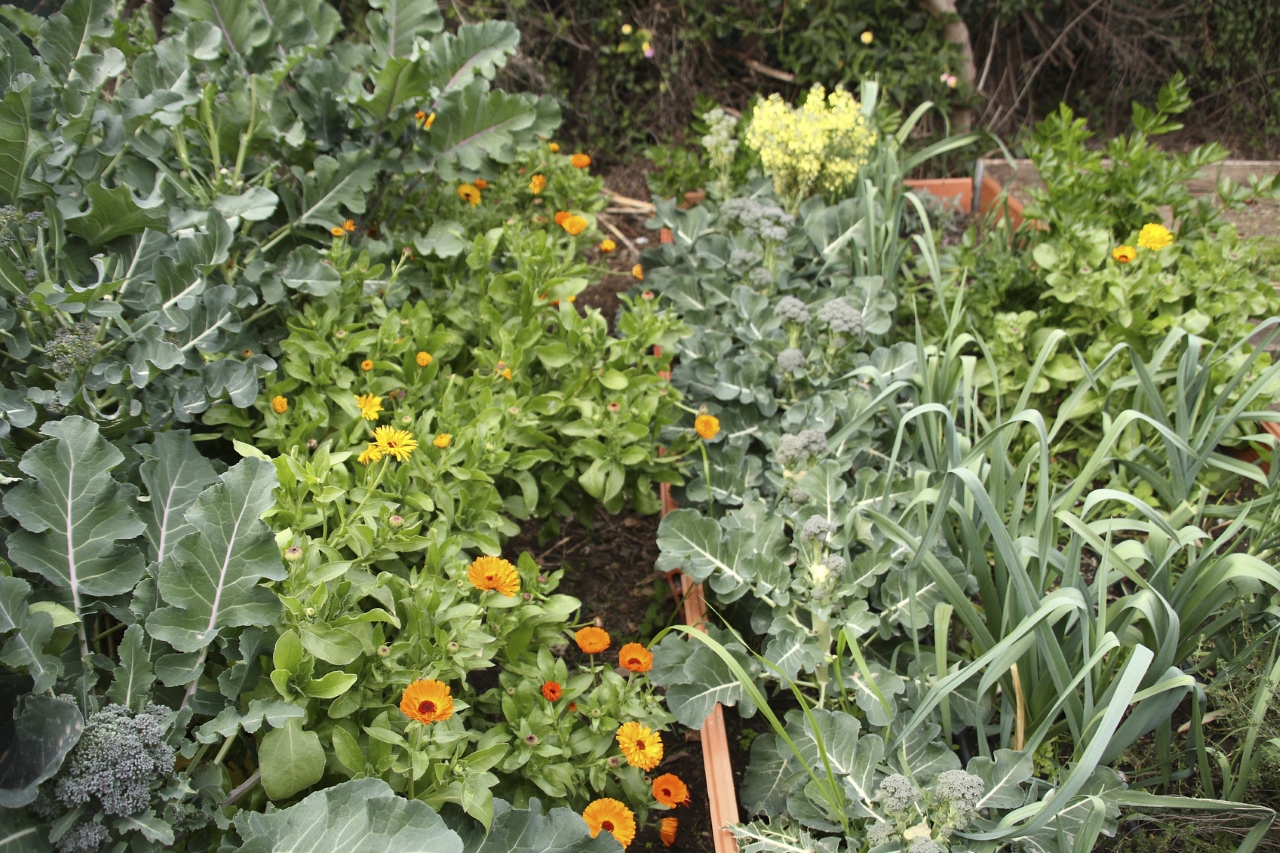If you are someone who finds joy in gardening, you would undoubtedly want to take all measures necessary to ensure that your plants grow beautifully and healthily in your garden. Companion planting is a technique that you must have heard of if you are passionate about gardening. This amazing and widely recognized concept involves the planting of different types of plants in proximity to each other to tap into the unique strengths and benefits of each plant.
This technique has been practiced for centuries across the world and has been an effective addition to many permaculture designs. Companion planting plays an instrumental role in creating a sustainable garden environment by boosting productivity. The art and science of companion planting are exciting areas to explore and can help you to unlock a wide range of benefits for your garden. By incorporating companion planting into your gardening methods, you can reap healthier plants and achieve more sustainable gardening outcomes.

Understanding Companion Planting
Companion planting is based on the principle that certain plants can enhance or inhibit the growth and well-being of neighboring plants. The relationships between these plants can be mutually beneficial, helping each other thrive, or they can act as natural pest deterrents. Some common reasons for practicing companion planting include:
Pest Control: Certain plants release natural chemicals or aromas that repel specific pests, effectively protecting neighboring crops.
Nutrient Accumulation: Some companion plants accumulate nutrients in their roots or leaves, making them available to other plants when they decompose.
Improved Pollination: Certain flowering companion plants attract beneficial insects like pollinators, which can increase fruit and vegetable yields.
Shade and Microclimate Creation: Taller companion plants can provide shade and create microclimates that help shelter more delicate crops from harsh weather conditions.
Key Companion Planting Combinations
Tomatoes and Basil:
- Reason: Companion planting basil repels tomato hornworms and enhances the flavor of tomatoes.
Beans and Corn:
- Reason: Beans fix nitrogen in the soil, benefiting corn, while corn provides a trellis for beans.
Three Sisters (Corn, Beans, Squash):
- Reason: Corn provides support for beans, beans fix nitrogen for corn, and squash serves as a ground cover, preventing weeds and retaining soil moisture.
Marigolds and Tomatoes:
- Reason: Marigolds deter nematodes and repel aphids, helping to keep tomato plants healthy.
Nasturtiums and Cucumbers:
- Reason: Nasturtiums attract aphids away from cucumber plants and serve as a sacrificial crop.
Carrots and Onions:
- Reason: Carrots repel onion flies, while onions deter carrot flies, making them excellent companions.
Sunflowers and Pumpkins:
- Reason: Sunflowers provide shade and support for pumpkin vines, while pumpkins help keep the soil moist and reduce weed growth.
Cabbage and Dill:
- Reason: Dill attracts beneficial insects that prey on cabbage pests like aphids and cabbage worms.
Radishes and Spinach:
- Reason: Radishes deter leafminers, which often affect spinach plants.
Lettuce and Chives:
- Reason: Chives deter aphids and provide shade to lettuce, helping it stay cool in hot weather.
Beets and Swiss Chard:
- Reason: These two crops can be grown together as they have similar water and nutrient requirements.
Peppers and Oregano:
- Reason: Oregano can deter aphids and spider mites, which can be pests for pepper plants.
Rosemary and Sage:
- Reason: These herbs can be planted together as they both require well-drained soil and similar growing conditions.
Potatoes and Horseradish:
- Reason: Horseradish deters Colorado potato beetles and helps protect potato plants.
Broccoli and Calendula:
- Reason: Calendula flowers attract pollinators and beneficial insects while repelling cabbage worms.
Peas and Carrots:
- Reason: Peas can help support carrot growth and deter soil-borne pests.
Spinach and Strawberries:
- Reason: Strawberries provide ground cover, protecting the soil and reducing weeds around spinach plants.
Zucchini and Nasturtiums:
- Reason: Nasturtiums attract aphids away from zucchini plants and serve as a trap crop.
Eggplant and Tarragon:
- Reason: Tarragon can help repel pests like aphids and spider mites that may affect eggplant.
Asparagus and Tomatoes:
- Reason: Asparagus can provide shade and weed suppression for tomato plants, and tomatoes deter asparagus beetles. Asparagus also has the added bonus of being a perennial.
By implementing these companion planting combinations in your permaculture garden, you can enhance plant health, reduce the need for pesticides, and increase overall garden productivity while promoting a harmonious and biodiverse ecosystem.
Companions to Avoid
While companion planting is generally used to create beneficial relationships between plants, it’s also essential to be aware of combinations that can have negative effects. Here are five companion planting matches to avoid in a permaculture garden and the reasons why:
Potatoes and Tomatoes (Solanaceae family):
- Reason: Both potatoes and tomatoes are susceptible to the same diseases, such as late blight and early blight. When companion planted together, they can potentially facilitate the spread of these diseases, leading to reduced yields for both crops.
Cucumbers and Potatoes (Solanaceae and Cucurbitaceae families):
- Reason: Cucumbers and potatoes are susceptible to different types of pests and diseases. Planting them together can attract pests that affect both families, increasing the risk of infestation for both crops.
Beans and Alliums (Beans and Allium families):
- Reason: Beans and alliums (such as onions, garlic, and leeks) can inhibit each other’s growth due to their different growth habits. Beans may compete for space and sunlight with alliums, leading to reduced yields for both. It is best to avoid companion planting these.
Pumpkins and Potatoes (Cucurbitaceae and Solanaceae families):
- Reason: Both pumpkins and potatoes are vigorous growers and can compete for space, nutrients, and sunlight. When planted together, they may overcrowd each other and result in stunted growth and reduced yields.
Asparagus and Garlic/Onions (Allium family):
- Reason: Asparagus and members of the Allium family release chemicals that can inhibit each other’s growth. Planting them together may lead to smaller asparagus spears and less robust garlic or onions.
Remember that while these combinations are generally discouraged, every garden is unique, and the specific outcomes can vary depending on factors such as soil conditions, climate, and local pest and disease pressures. It’s essential to observe and adapt to your garden’s specific needs and conditions to achieve the best results.
Implementing Companion Planting in Your Permaculture Garden
Companion planting is an effective way of maximizing the benefits of permaculture garden. To ensure that this practice is successful, it is important to follow a few essential steps.
Firstly, it is important to conduct thorough research on the specific needs, growth habits, and companion plants of the crops that you intend to grow. Fortunately, there are a wide range of books and resources available that provide comprehensive guides on companion planting.
Next, it is crucial to plan your garden layout taking into account the beneficial interactions between different crop varieties. Factors like plant spacing, height, and growth rate should be given careful consideration. To prevent the build-up of pests and diseases, it is recommended that you rotate your crops. By changing the location of your companion plantings each season, you can promote healthier plant growth.
Finally, it is imperative to observe and adapt as needed. Every garden is unique, and not all companion plantings will work equally well in every situation. So, be prepared to experiment and make necessary adjustments.
Companion planting is a valuable tool in the permaculture toolbox, promoting biodiversity, reducing the need for chemical pesticides, and enhancing overall garden health. By strategically planting complementary species and fostering these beneficial relationships, you can create a thriving and sustainable garden that not only yields abundant harvests but also contributes to a healthier ecosystem. Embrace the art and science of companion planting in your permaculture garden, and you’ll witness the incredible benefits it can bring to both your crops and the environment.

Pingback: Growing Abundance: Hugelkultur Beds And Sustainable Permaculture Gardening - KeyStone Cottage